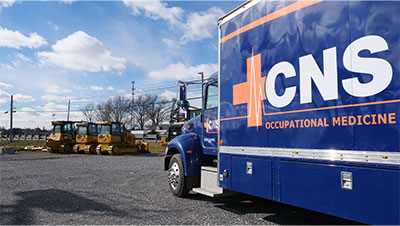To prevent injuries and sustain high-quality performance, employers need to treat their professional employees like pro athletes. But how?
One quality that professional athletes have that employers seek is sustained high-quality performance.
In training athletes, physical trainers build their capacity for certain competencies, such as endurance, strength, flexibility, self-control, and focus.
As an employer your goal is to measure your employees’ full potential before they harm themselves, their co-workers, or the company. But why?
Well, the career of the average pro athlete only lasts seven years while your professional employees may work for 10-20+ years in safety-sensitive positions!
In fact, the demands on these employees to sustain high-quality performance day in and day out actually dwarfs the challenges faced by any pro athlete because your safety-sensitive employees must perform on demand 8, 10, or 14 hours every day, and do so with only three or four weeks of vacation a year!
There is one common way employers can measure their workplace athletes, with a post-offer physical abilities test.
What are Post-Offer Employment Test and Physical Abilities Tests?
Implementing physical abilities tests for your pre-employment process is simple to do and can provide great payback in workplace safety and are a sign that an employer has a safety-first culture.
With post-employment physical agility tests, you are aiming to measure their capacities to thrive in the everyday circumstances and stressful work periods to make sure they can handle the rigors of their career.
A Post-Offer Employment Test (POET) is a medical evaluation provided to potential new hires and can include Physical Ability Testing (PAT) to ensure a new employee can perform essential job functions, also known as bona fide occupational requirements.
The medical evaluation, along with the PAT, will be reported to the employer. This allows you to make a final decision regarding the offer of employment.
The PAT is a custom-built test for your employee’s needs and specific to the job functions that they perform, covering things such as strength, balance, range of motion, and a number of other essential functions.
This can consist of:
- Lift tests
- Muscular Tension Tests for pushing, pulling
- Muscular Power Tests to overcome some initial resistance
- Muscular Endurance Tests involving repetitions of tool use
- Cardiovascular Endurance Tests to assess aerobic capacity
- Flexibility Tests where bending, twisting, stretching, or reaching is important
- Balance Tests in which stability of body position is difficult to maintain
As with any test, you need to set clear and realistic measurements when testing their strength, coordination, and endurance, such as:
- Lifting weights, up to 100 lbs or more
- Carrying a set weight for a set distance
- Pushing a weighted wheelbarrow up and down ramps a set number of times
- Lifting weights of increasing difficulty using proper form
- Carrying large objects for a certain distance
Physical ability testing is legal when designed, developed, and implemented in accordance with the Uniform Guidelines on Employee Selection Procedures.
Just make sure that you have “validity evidence” justifying the job-related physical ability measurements to protect your company from any legal issues.
Schedule a Physical Abilities Test
What are the benefits of POETs and PATs?
Employers who implement these fit-for-work tests regularly lower OSHA recordables compared to companies that do not have Post-Offer Employment Testing.
According to many studies, higher levels of physical fitness may greatly reduce the risk that personnel will sustain an injury.
By testing your new hires to ensure they are physically capable of doing the job, you are saving yourself on Worker’s Comp claims and OSHA recordables.
[Related: Reduce OSHA Recordable Injuries with Updated Job Descriptions]
Additionally, physical agility tests lead to improved safety, satisfaction once hired, and reduces turnover.
That is why it is important to hire the right employee the first time, so you are not wasting time and money by hiring someone who can’t perform the job. You need someone to hit the ground running.
Just remember, when establishing clear and realistic measurements for injury risk fitness assessments, you will need to decide on the level of risk you are willing to accept.
If standards are raised, there may be less risk of workplace injury; however, the recruitment pool of employees will likely be smaller.
Need a custom post-offer employment test?
If you are regulated by OSHA, choosing an occupational medicine team that understands the OSHA recordkeeping rule and how certain medical diagnoses and treatments impact your OSHA 300 log is crucial.
Our Occupational Nursing staff will build a custom Post-Offer Employment Test for your employee or employees by giving them specific physical tests to complete depending on their job functions.
Start a custom post-offer employment test today!
For more information, contact us at 800.551.9816 or info@cnsoccmed.com.










